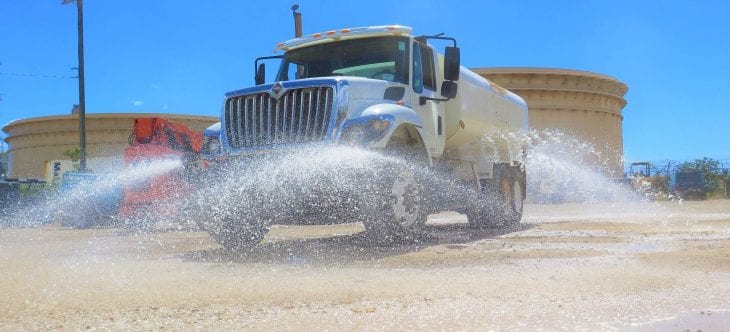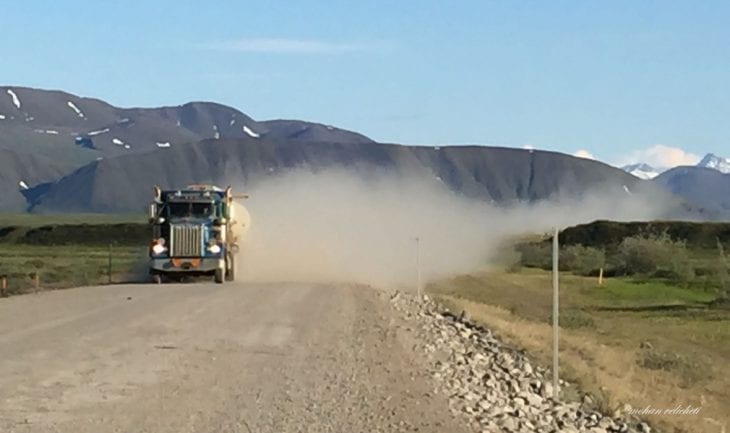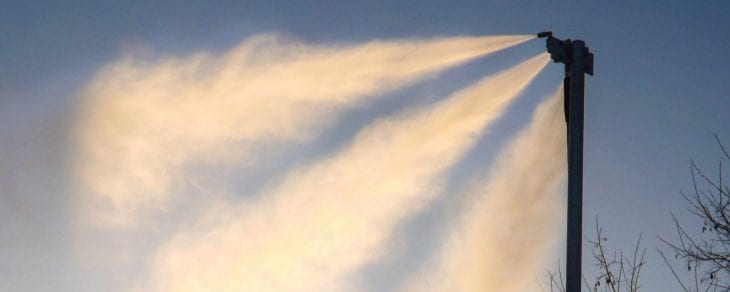In 2016, Environment Justice, Australia, found that approximately three thousand people across Australia due to air pollution caused by suspended dust in the air. They advocated stringent laws for dust control and dust suppression.
RST’s dust suppression techniques have the same belief. Their statement read, and we quote:
The Guardian reports: “Australia lacks an effective system of regulation for air pollution. The current system is based on a completely unsatisfactory arrangement that leaves important standards to protect health to be set by complex intergovernmental arrangements. This system is failing to protect public health adequately.”
To understand and implement dust suppression techniques, several businesses have taken the huge responsibility to understand dust suppression and dust control techniques. Read on to find out almost everything about dust suppression.

source: miningmonthly.com
How Is Dust Suppression Practiced?
Dust suppression services involve three parameters, namely, the chemicals used for dust suppression, the dosing rate of the chemical and the frequency of application to optimize the costs associated with the services. To optimize the costs associated with the services, it is essential that the efforts are directed according to all the three variables mentioned above.
Top Locations Where Dust Suppression Practices Are Needed
Specific locations require dust suppression more than the others. The kind of dust that is emitted, the SPM count and the acidity and basicity of the dust (in other words the pH concentration) determines the nature of the chemicals that are the best, cost-effective fit for dust suppression.
- Stables, Riding Tracks
Stables and riding tracks are one of the dustiest places in the world. Running horses agitates the loose dust particles that are on the top layer of the tracks. When they run, as a result, the particles gain momentum and float in the air. This floating motion carries them farther than expected in the wind. Unfortunately, simple options like spraying the tracks with water are just not enough to control dust emission at stables and racing tracks.

source: butterscompanies.net
- Dog Racing Tracks
Australian millennials are slowly shifting towards a stronger, aggressive breed of dogs. Breeds such as greyhound and terriers are becoming popular at the moment. This has also increased the need for dog racing parks since these breeds need a significantly higher amount of physical activity. Thus, dog racing tracks have emerged as another source of dust emission that needs to be controlled.
- Construction and Demolition Sites
Construction and demolition sites are the most significant sites for dust emission because of the quantum of wreckage that is required. Nevertheless, it is not just the demolition that emits dust. The process of carrying the debris back and forth also emits a tremendous amount of dust. Mixed dust particles from cement, bricks, wood, and sand identify it as yet another essential location where dust suppression practices need to be implemented.
- Quarries
Quarries pose high health and occupational hazard primarily because of the exposure to dust, the noise, and the ground vibrations. Not to forget that the dust emission is directly proportional to the energy that is put in during the breakdown process. Unlike construction and demolition sites, the dust emitted at quarries have a significantly higher proportion of silica which can lead to silicosis in the long run. This places quarries higher on the list of businesses that have integrated dust suppression closely into their working system.

source: landscapeexplorer.com
- Haul Roads
Haul roads are uneven. They have mounts of dust on either side of the narrow lane that bears the load of heavy vehicles carrying tonnes of material with residual dust on their surfaces. The speed only makes it worse. The smaller dust particles often spread farther because of their light weight and the momentum that the wind velocity imparts to the particles.
Dust Suppression And Its Advantages For Small And Medium Sized Enterprises
Small and medium-sized enterprises need more than the output to build a brand and a reputation in the market, be it regional or national. Integrating dust control and dust suppression techniques into the practices might look like a simple add-on, but in reality, it sends out a loud and clear message to everyone around you. Following are just a few things about this belief that will make heads turn and give you the necessary attention to promote your business entirely.
- Odor Removal and Workplace Sanitation
- Maintains a safe working environment
- Economical advantage
- Maintaining community relationships
Unfortunately, we are about to hit rock bottom when it comes to caring about the environment enough that sustains us. Dust suppression is the first step to dust control, and we have very little time to understand and do the needful to nip the problem in the existing stage.

source: corgin.co.uk
